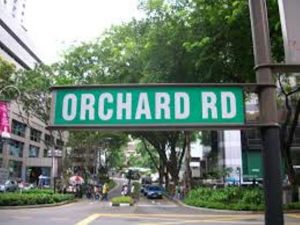Industrial property market showed resilience while retail property market weakened as malls shuttered in H1
- Retail property market rents weakened as malls shuttered in H1 but vacancy should improve next few years and trend towards 7% in 2024
- General factory space to remain weak on the economic recession while the business park and high-specs segments to be supported by the thriving technology sector
- Factory rents decreased 1.4% while warehouse rents were flat
- A relatively stronger outlook for warehouses
Colliers International, on 20th August published two research reports which examine the market performance of the retail property market and industrial property sector in the first half of 2020 (H1 2020) and its projections for both sectors.
Colliers Research notes that both the retail property market and industrial property sectors have weakened in the first half as Singapore sinks into a recession. However, there are some silver linings.
Retail sales saw a rebound in June, up to 43.1% month-on-month (MOM) as malls reopened on 19 June, indicating the worst may be over. The industrial property market demonstrated relative resilience and selected segments will be bright spots in the near to medium term.
Based on Colliers’ research, rents on Orchard Road dropped 5.9% half-on-half (HOH) in H1 2020 to S$38.24 per square foot per month (psf pm), while that of Regional Centres declined 3.5% HOH to S$32.43 psf pm.
“This reflects the impact of COVID-19 circuit breaker measures,” said Tricia Song, Head of Research for Singapore at Colliers International. “Exiting the lockdown, most shops have reopened, though the sector remains fragile.”
The recovery of the overall retail property market is likely to be slow on COVID-19 headwinds and structural challenges such as increasing competition from e-commerce and high occupancy costs. Online sales as a proportion of total retail sales more than doubled from 8.5% in March to 18.1% in June, versus 5.8% in Jan 2020.
Despite major landlords such as CapitaLand providing flexible rental payment schemes such as offsetting rents with security deposits, and helping their tenants accelerate their digitalisation process to sell online, some malls’ vacancies could remain high and rents are likely to remain weak. That said, with limited new retail stock in the next five years, Colliers forecasts the vacancy to improve and trend towards 7% in 2024.
Colliers Research expects overall average retail rents to decline 6.5% for the full year in 2020, and recover 2.3% in 2021 with limited new supply. Ms. Song added, “Post COVID-19, landlords may also look at lease and rent restructurings such as adopting Gross Turnover Rent (GTO) rent”.
As investors turned more cautious amid COVID-19. Investment volumes contracted 85.7% HOH in H1 2020 to S$283 million with only one major enbloc transaction – the retail units at 30 Raffles Place in June (S$193 million).
Although most retail businesses in Singapore have resumed operations since 19th June 2020, social distancing measures remain in place after a two-month circuit breaker. Many activity-based tenants such as F&B and health & wellness will not be able to operate at full capacity, which could lead to many businesses shuttering for good. As a result, vacancies in non-prime locations are expected to rise in the second half of 2020.
Prime retail rents fell across the board in the second quarter of 2020, with Other City Areas rents ($20.88 psf/mo) falling the most at -3.5 per cent quarter-on-quarter. Orchard ($34.73 psf/mo) and Suburban ($31.56 psf/mo) prime rents fell -1.5 per cent and -0.9 per cent quarter-on-quarter respectively.
Retail industry is one of the hardest hit sectors by COVID-19 pandemic and that the data of 2Q 2020 retail vacancies suggested that rents will be laggard in the next few quarters. While retail sales are likely to see a short term rebound as malls reopened on 19 June (phase 2 easing),recovery of the overall retail market is expected to be slow, with no inbound tourist spending in the near term, and structural challenges such as increasing competition from e-commerce, as well as high occupancy costs.
Industrial
Singapore’s industrial property market emerged relatively resilient in H1 2020 amid the global COVID-19 pandemic. Based on Colliers’ research, the average monthly factory gross rent fell by 1.4% HOH to S$1.65 per square foot (psf). In contrast, warehouse rents were flat while business park rents declined 0.35% HOH to S$4.35 psf and independent high-spec industrial building rents slipped 0.25% HOH to S$2.93 psf.
“We saw more warehouse space being leased on increased stockpiling and e-commerce activities during H1 and the rising demand for web-enabled services during lockdowns has also driven demand for data centres”, said Steven Tan, Senior Director of Capital Markets and Investment Services at Colliers International.
“The delay of some industrial supply completions due to the lockdown has provided some relief to what would have been potentially a supply glut this year. However, the planned supply pipeline remains ample. We estimate 84% of the H2 2020 – 2024 supply is factory space, while the remaining 16% is warehouse space.”
Overall, Colliers Research expects general factory space to remain weak on the economic recession and the business park and high-specs segments to be supported by the thriving technology sector.
Mr. Tan added, “As island-wide warehouse vacancy continues to improve below its current 11.7% level, we expect warehouse rents to stabillise in 2020 and pick up from 2021 onwards, led by ramp-up logistics space. We can also expect general factory rents could fall 3% in 2020, while business parks and hi-specs space could edge down 1% in 2020, as industrialists pause expansion plans and recalibrate or pivot their space requirements given the weak trade and economic conditions.”
In H1 2020, the transaction volume of strata-titled factory and warehouse units fell 41% and 58% HOH respectively, due to the lockdown measures. On the other hand, median prices per square foot declined 8.4% HOH for strata-titled factories but grew 0.2% HOH for warehouses. This reflects a relatively stronger outlook for warehouses.






